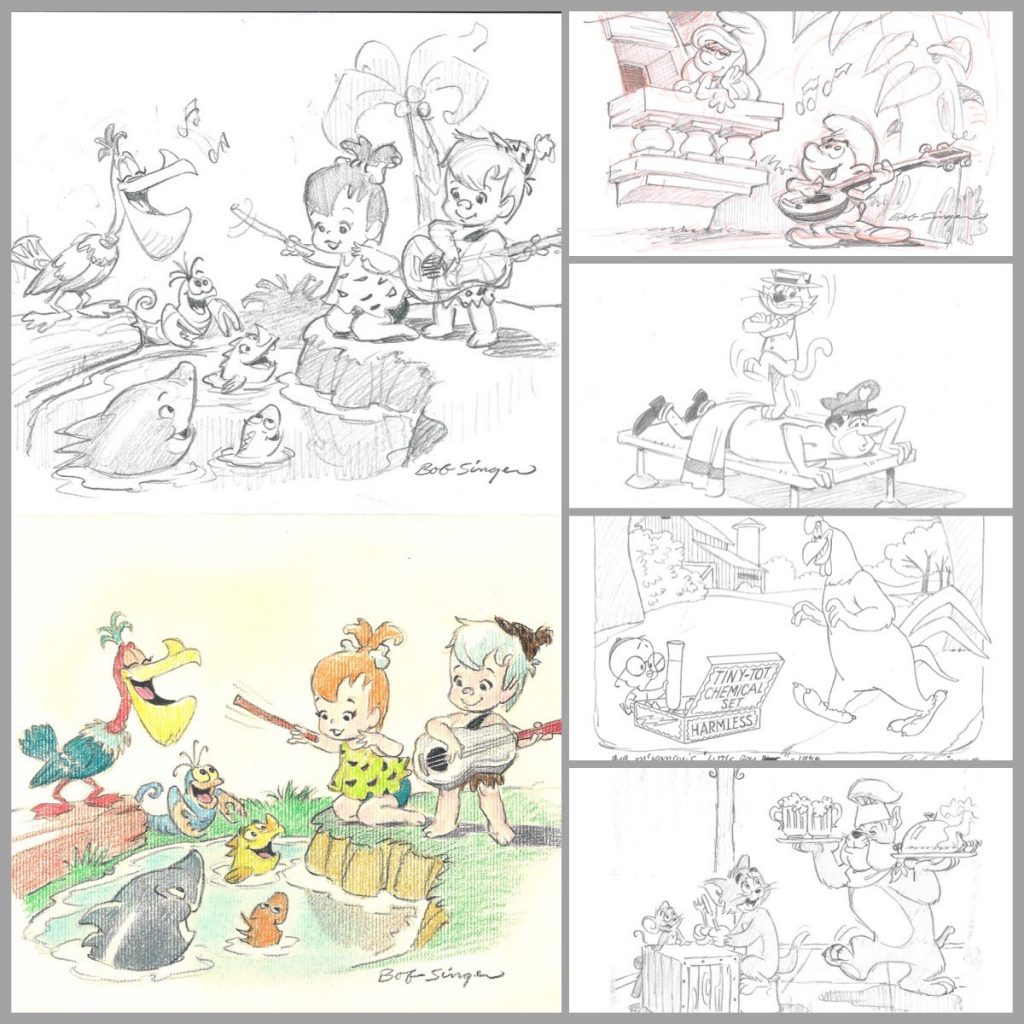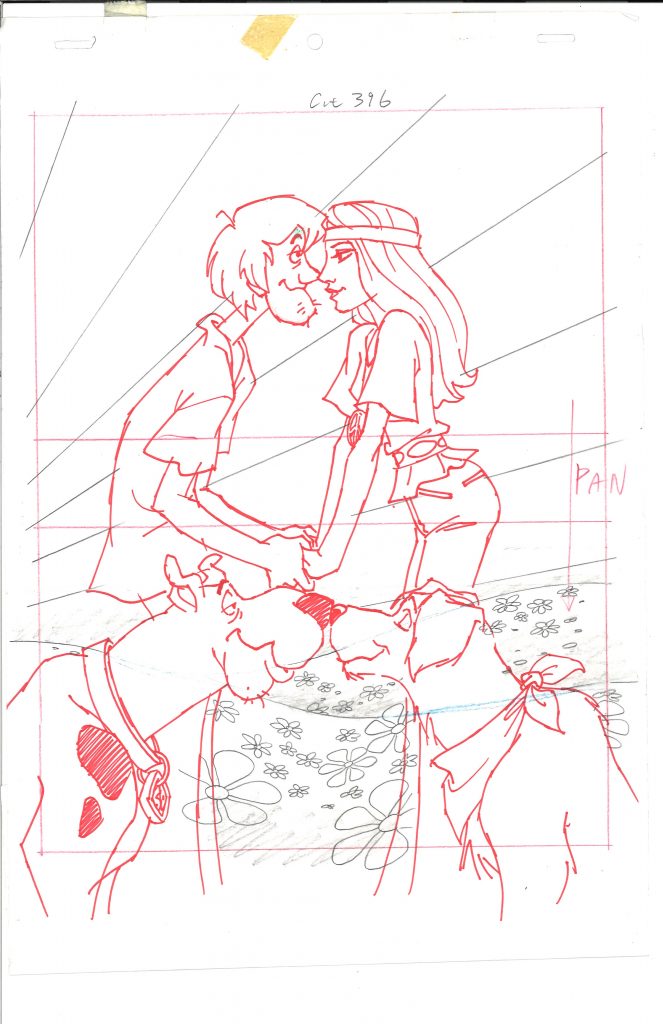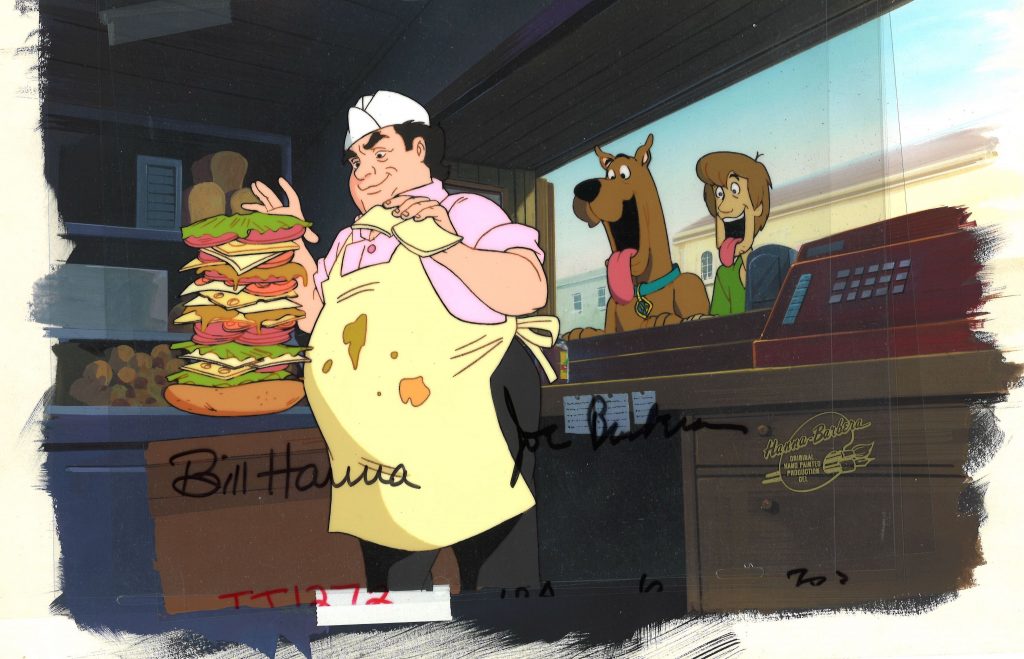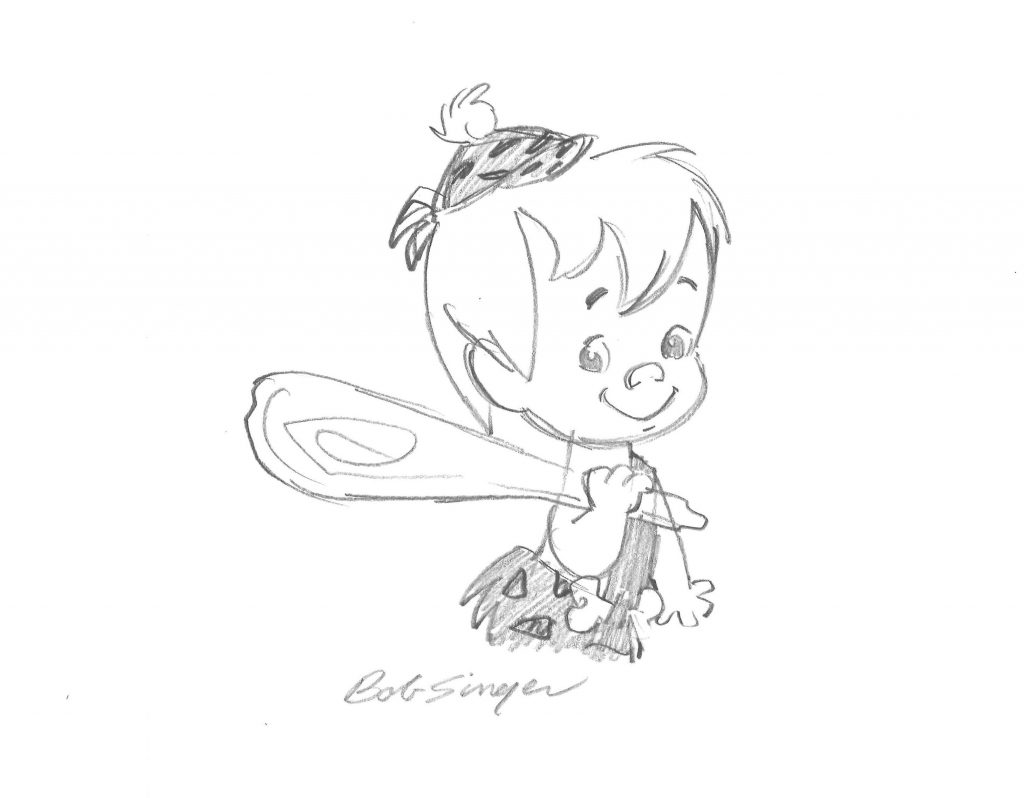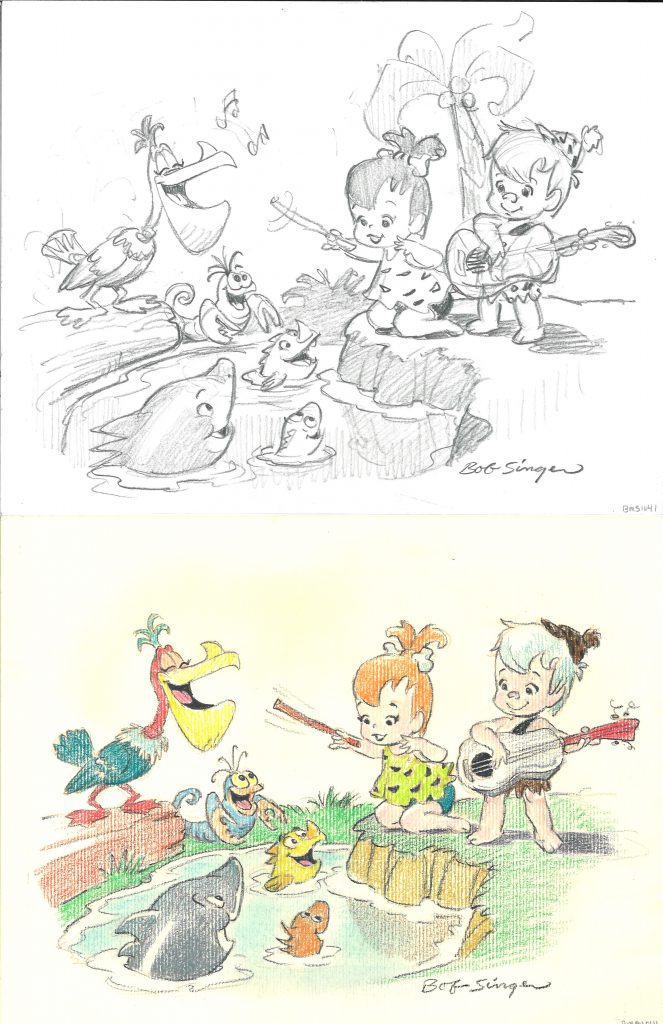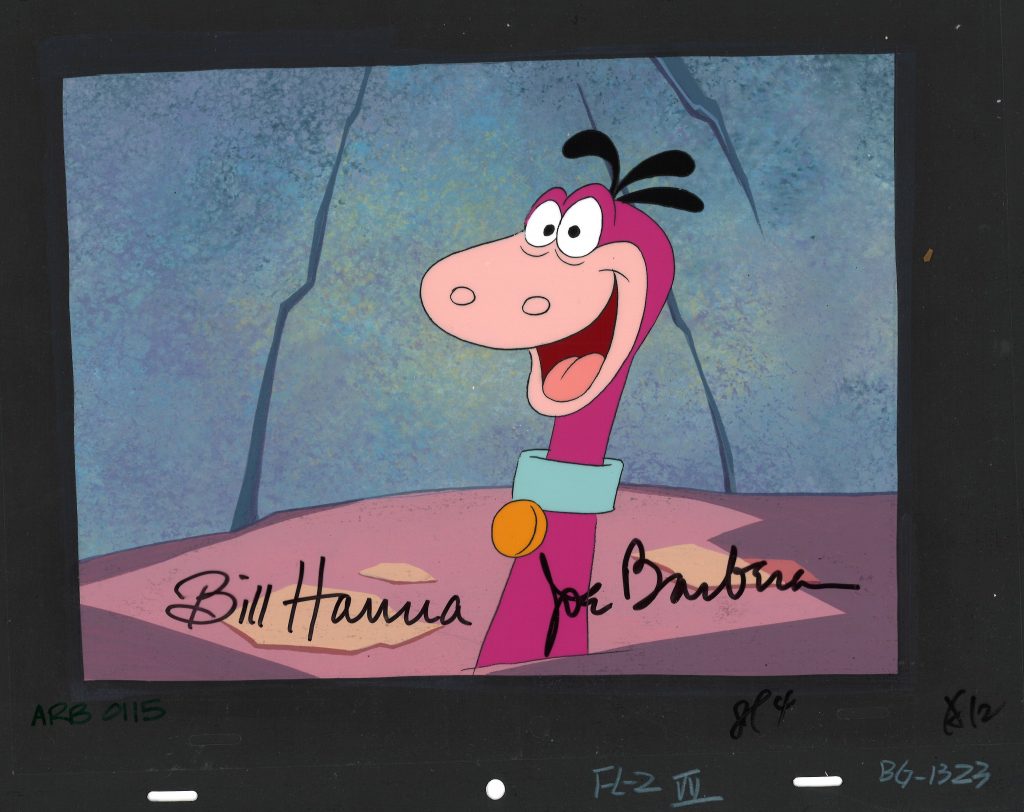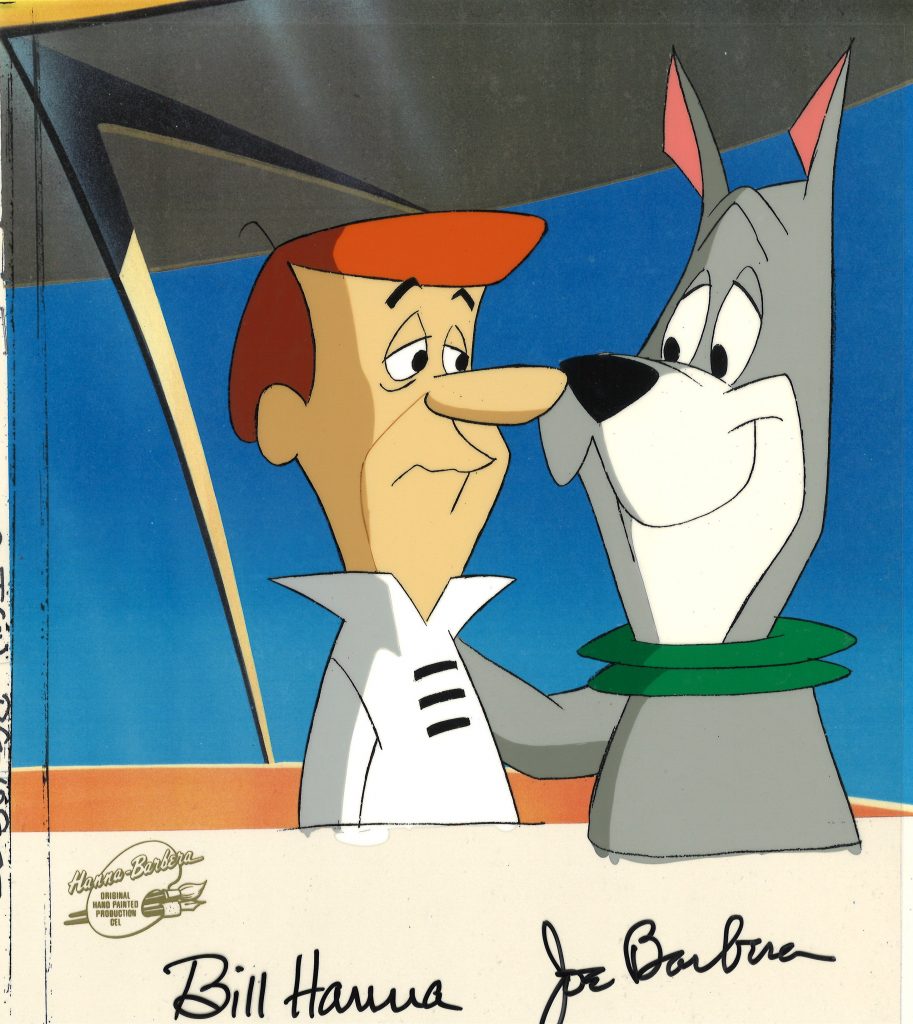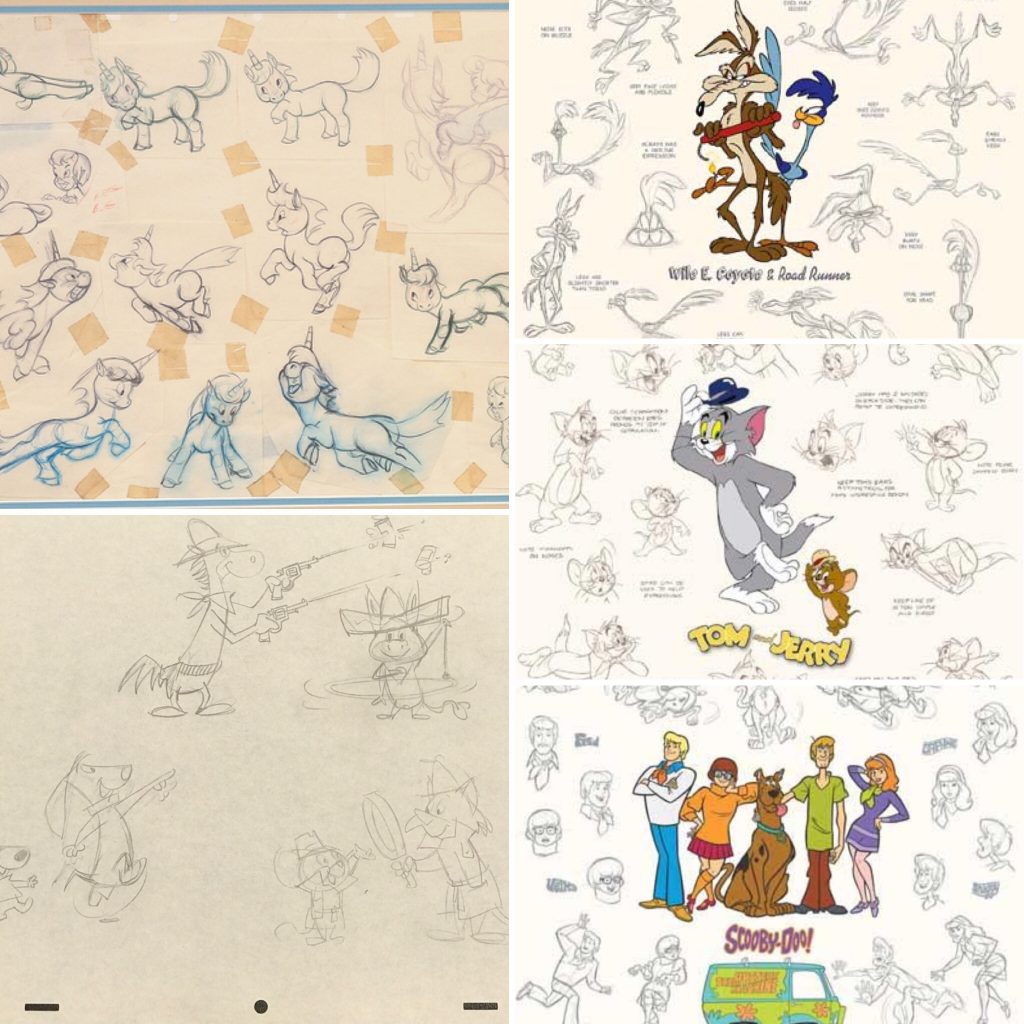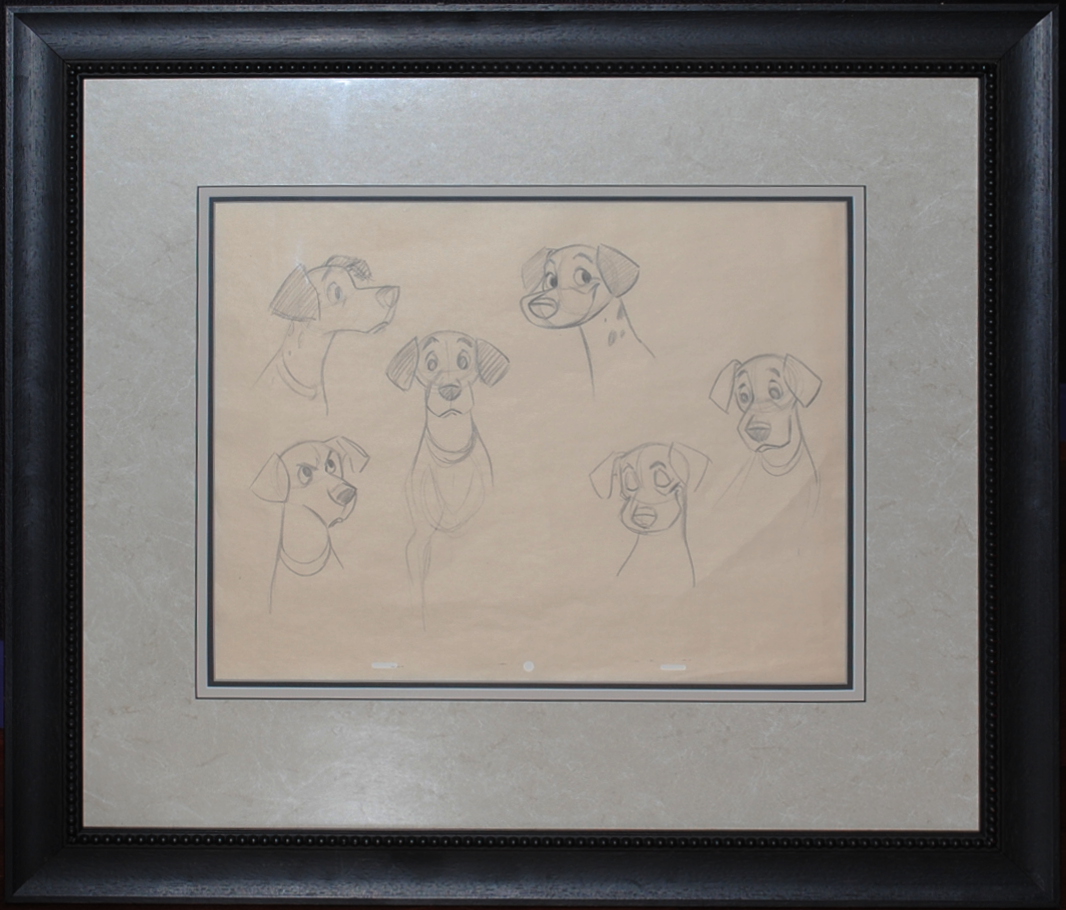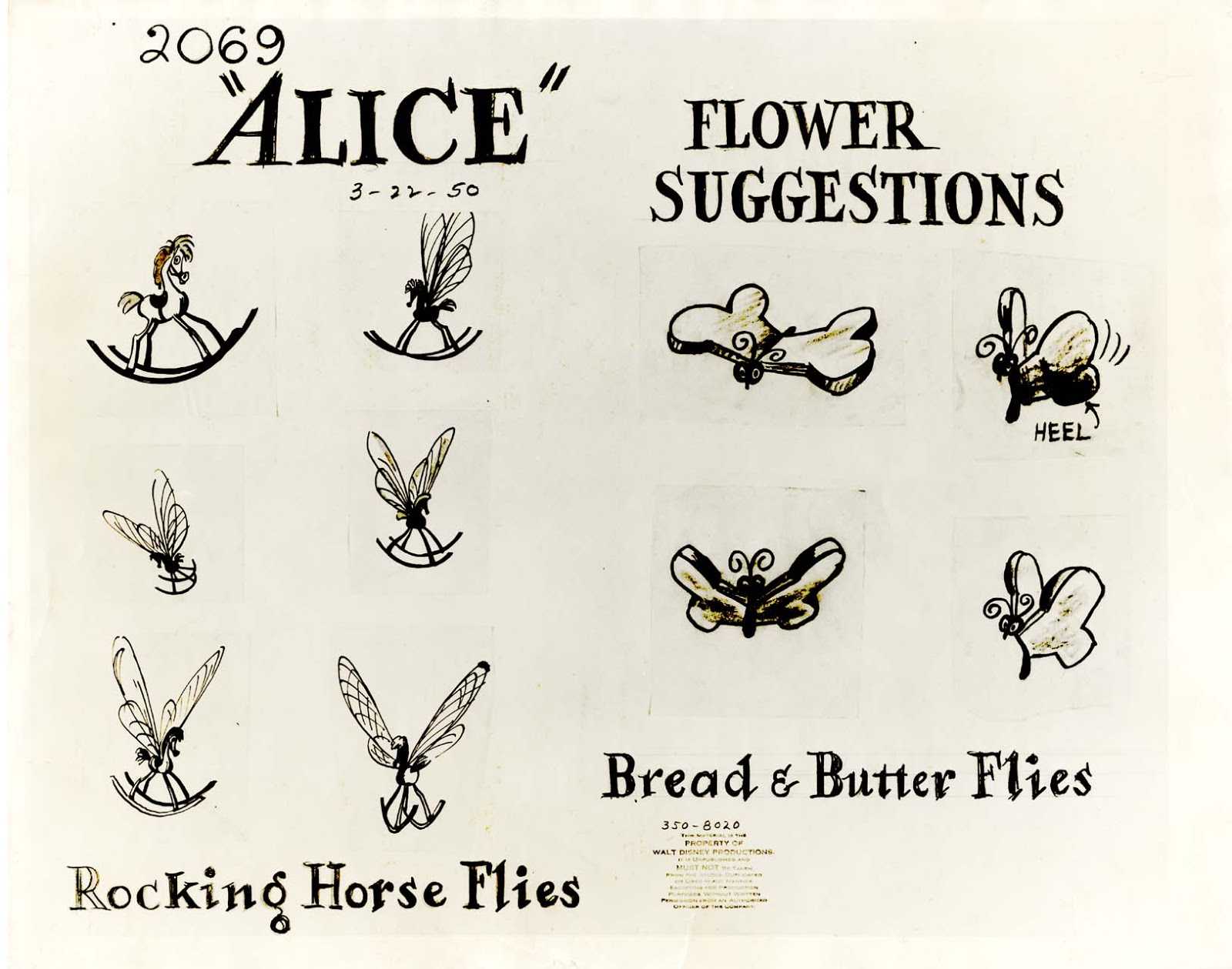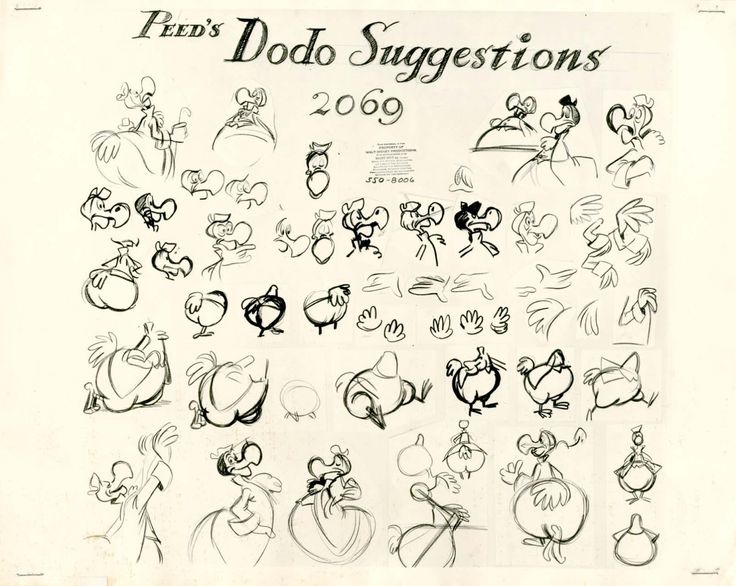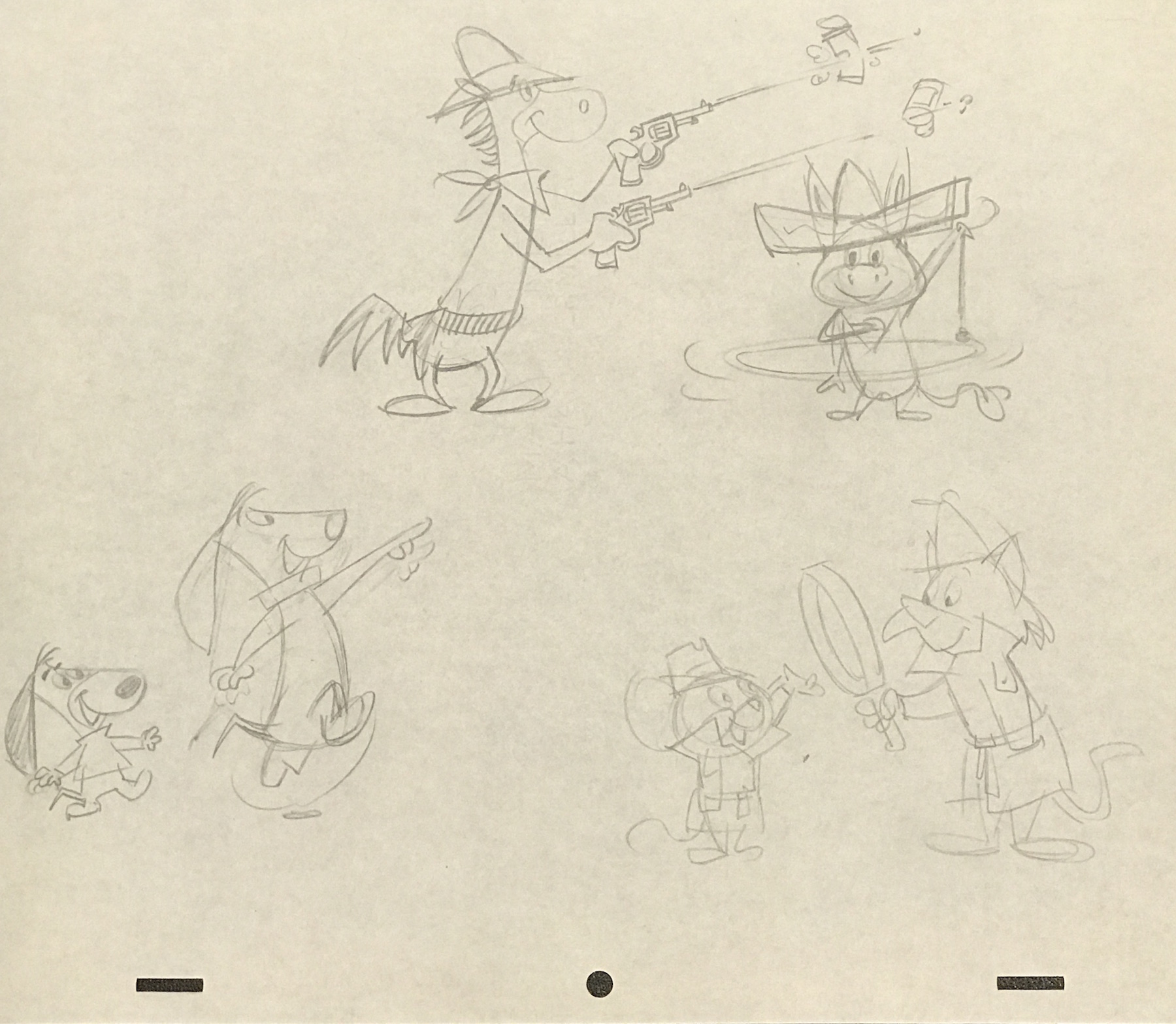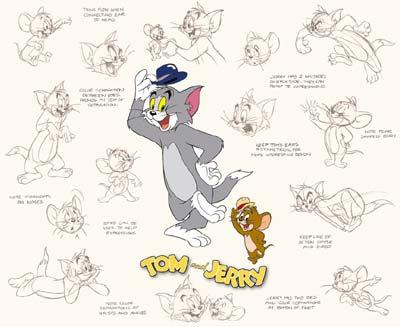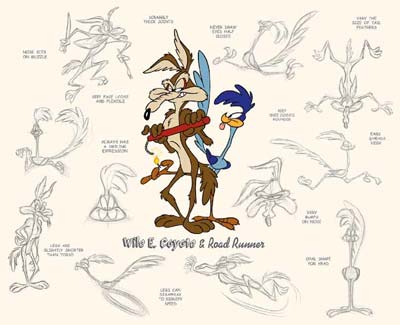When the weirdest, and I’d even say craziest thing that’s happened in our lifetime happened, and a disease started sweeping the world, as an art gallery and small business owner I started thinking about how we’d weather the storm, yes, but I also considered all the artists that we work with who also survive and even thrive on selling their art to fans around the world. I also considered the wholesale companies and representatives I love, (and I don’t love them all. I love several, because they are awesome human beings). How could we help not only ourselves, but the friends and collaborators we’ve known for dozens of years?
First up, I thought of Bob Singer. An old, brilliant, and I’d say formidable 92-year-old codger who has been part of the history of animation since the 50s. I’ve known him for over 10 years, and have had him on several of the ASIFA: Hollywood panels I’ve produced for San Diego Comic-Con. Luckily for me, for ArtInsights, and potentially for fans, we were able to get an exclusive collection of original art by this very important artist.
(HERE IS A LINK TO ALL THE BOB SINGER ART ON ARTINSIGHTS)
Bob Singer is an animation artist, character designer, layout and background artist and storyboard director for a wide variety of shows and studios. He wound of choosing art in a sort of random way. He says, “When I was in high school, I loved art and I also loved music. When I found out I had to buy my own instrument and we couldn’t afford it, I said, ‘all right, I’ll become an artist’.”
He graduated in 1955 from the prestigious Art Center College of Design in LA, started working in the television animation industry after spending a few years in the advertising industry. Yes, he was briefly one of those “Mad Men”.
Starting in 1956, he worked for Marvel, U.P.A, Shamus Culhane, and Warner Brothers, and continued to take projects from nearly every studio through his career.
It was at Hanna Barbera at which he spent the better part of 27 years of his animation career. He has worked on most of Hanna Barbera’s best shows, and you’ll see his indelible mark on The Flintstones, Scooby Doo, Hong Kong Phooey, Jabberjaw and so many more cartoons that continue to be loved around the world.
He has said that his favorite tv show he has worked on is Scooby Doo. From Bob Singer himself:
“My favorite was far and away Scooby Doo. Those were some great shows that were designed in 68 and released in 69. And after so many years, it’s still running all over the world. I was part of the presentation crew that put it all together, although the characters were designed by the great Iwao Takamoto. My part was running the layouts on the show. I laid out the first Scooby.”
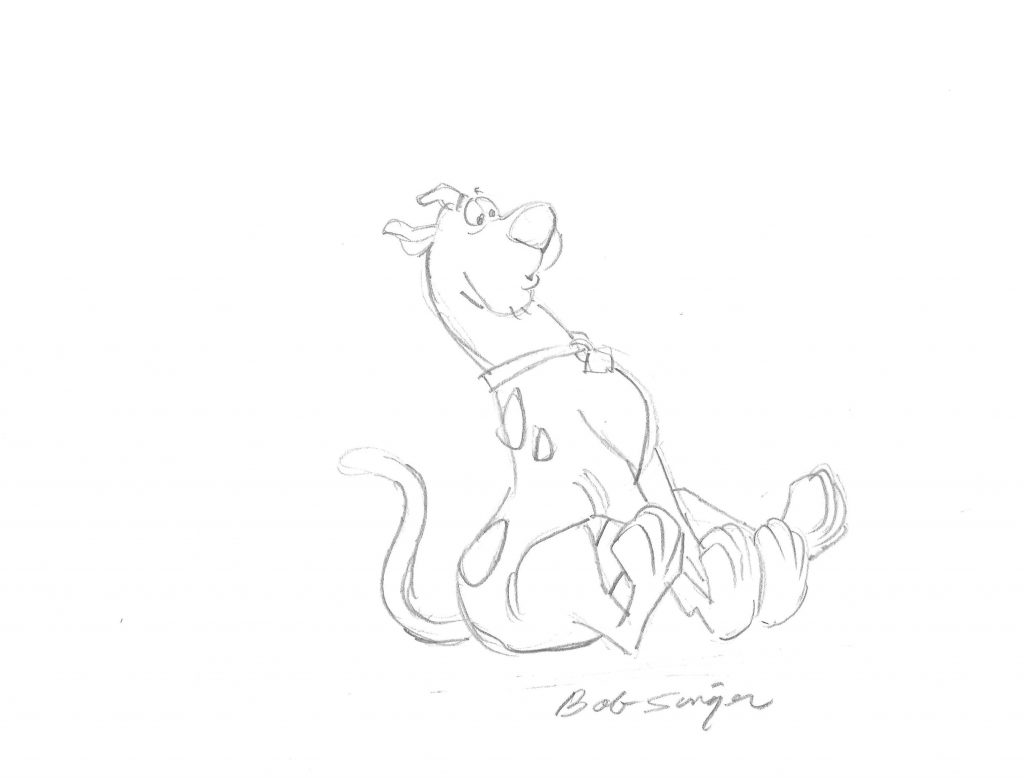
(how to draw Scooby Doo: https://www.youtube.com/watch?v=FWIJkAzCzgI
He was responsible for a lot of characters at Hanna Barbera, in part because he was tasked early on to start and run the character animation department. He explains:
“In the early days of animation in the 20s and 30s, most of the animators designed their own characters. At Hanna Barbera, the layout artists would be asked to create the incidental characters, like the cop, or housewife, and props like cars but they got so busy that it became a burden to the layout men, so that’s when we started the character design department. It was started with just two, and soon had 15 artists, doing all the characters for 7 different shows, making model sheets and it helped the studio run more efficiently.

everything was compressed as far as production, so sometimes we would work from a script, and other times from storyboards, but then the storyboard artists wouldn’t know what to use for incidental characters, so we’d do a quick sketch and give it to the artists to create the storyboard. Then we also had to get approval from the producer, so I’d design 3 to 5 different versions of the same character, and they’d pick one for us to draw and do turn-arounds on.”
Bob Singer also has a major soft spot for Pebbles, Bamm-Bamm, and the whole Flintstones gang, in part because Wilma reminds him of his wife Harriet, and the babies remind him of his grandchildren.
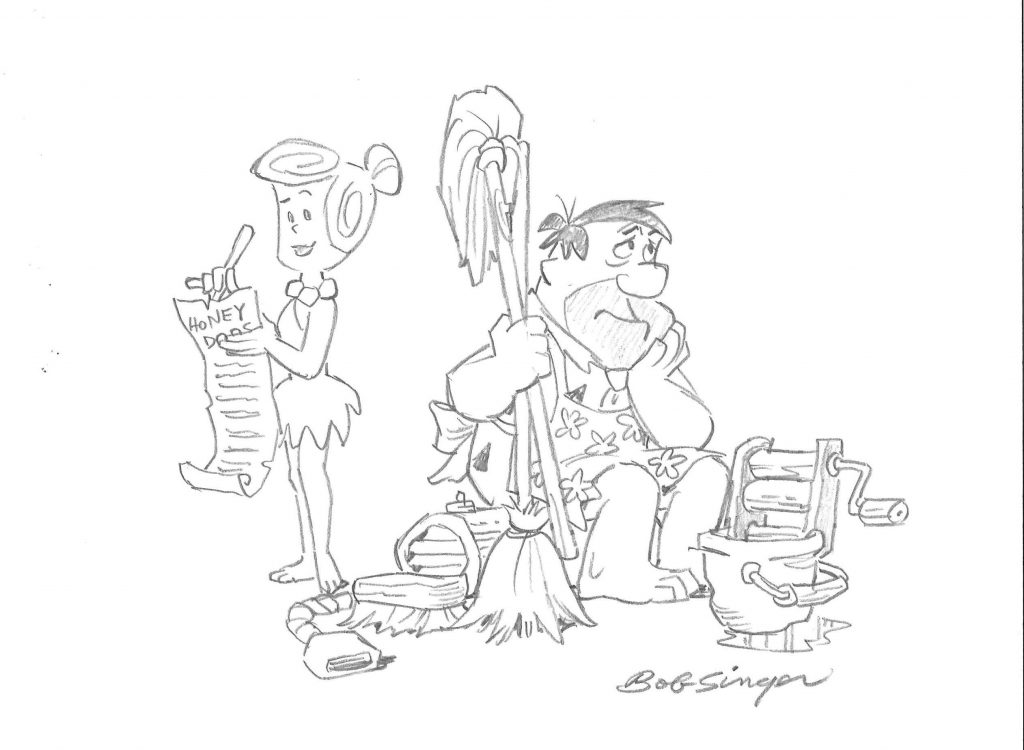
Singer says he loves drawing them, and it gives him a feeling of connection to his fans who also have families they love, and kids who are either babies now or are all grown up but parents and grandparents remember as little kids.
Many of the original cels we have gotten for this cyber show, which are from the later Flintstones cartoons, (as well as those from Scooby-Doo and The Jetsons), are signed by both Bill Hanna and Joe Barbera. We have a lot of pieces that come with original backgrounds. When you purchase any of them, we’ll send the art to Bob Singer, and he’ll be hand-drawing a little image of Fred Flinstone, George Jetson, or Scooby-Doo. For fans and collectors, that’s a lot of cool in one place!
YOU CAN SEE ALL THE BOB SINGER ART BY CLICKING HERE.
There are so many more images available than what i’ve included in this blog. I’m sure you’d enjoy checking them out!
Basically, Bob Singer has done just about every job that relates to design, character, and background in cartoons.
Here’s a short list of the many times shows on which he’s been a layout artist:
- Johnny Bravo (1997-2001)
- The New Scooby-Doo Movies (1972)
- Scooby-Doo Where Are You? (1969-1970)
The theme song was written by David Mook and Ben Raleigh. Mook was a well-known jingle and theme writer, also famous for The Banana Splits and The Dating Game theme songs. Raleigh wrote hits for, among many, The Monkees, Bobby Darin, Johnny Mathis, Nat King Cole, and Aretha Franklin.
- Space Ghost (1966)
- The Man Called Flintstone (1966)
- The Secret Squirrel Show (1965)
- Mister Magoo (1960)
A Storyboard artist/director or story director:
- Droopy: Master Detective (1993-1994)
- My Little Pony ’n Friends (1986-1987)
- Pink Panther and Sons (1984-1985)
- Scooby-Doo, Where Are You? (1970)
A design supervisor:
- The New Scooby-Doo Mysteries (1984)
- The Smurfs (1981-1984)
- SuperFriends (1984) and Super Friends (1981-1983) World’s Greatest SuperFriends (1979)
- The New Scooby and Scrappy-Doo Show (1983)
- Pac-Man (1982-1983)
- The Fonz and the Happy Days Gang (1980-1981)
- Laverne and Shirley in the Army (1981) **(also character designer)
- Scooby-Doo and Scrappy Doo (1979-1980)
- Jabberjaw (1976)
a character designer:
- Captain Caveman and the Teen Angels (1977-1980)
- Laverne and Shirley in the Army (1981)
- Scooby’s Laff-A-Lymics (1977)
- The All New Super Friends Hour (1977)
A production designer:
- The Scooby-Doo / Dynomutt Hour (1976)-1978
- The New Tom and Jerry Show (1975)
- The Great Grape Ape Show (1975)
- Hong Kong Phooey (1974)
- Partridge Family 2200 AD (1974)
- Inch High Private Eye (1973)
- The Famous Adventures of Mr. Magoo (1964)
- Gay Purr-ee (1962)
a background artist:
- The Bugs Bunny/Road Runner Show (1978)
- Mad as a Mars Hare (1963)
- Mice Follies (WB Honeymooners Bob McKimson spoof in 1960)
- Crocket Doodle Doo (WB Foghorn Leghorn/Eggbert Bob McKimson cartoon in 1960)
- A Witch’s Tangled Hair (1959)
The Mouse That Jack Built (1959)
Jack Benny himself starring in the cartoon.
So basically he’s done work on many of your favorite Hanna Barbera shows, (and a number that seem the result of protracted drug trips), and some very classic Warner Brothers cartoons!
It’s a great time to get an original by the historic artist, and the original graphites come directly from him and the cels are signed are remarqued by him with characters that are some of his favorites from his career, means you can be assured he is benefitting from the sale, and you are having an interaction with someone responsible for some of the greatest cartoons ever made. (Scooby-Doo, I’m looking at you!)
We hope you’ll take advantage of this great collection of art, and the exclusive signatures and remarques by this animation legend. If not, we hope you enjoyed learning a bit about animator Bob Singer and the crazy cartoons he had a hand in!

